
Stories draw us in. They capture our attention. When we use powerful elements of storytelling in our instruction, it can transform learning.
This post is adapted from a chapter in the original manuscript for my book, Tech Like a PIRATE. The chapter didn't make the final draft of the book because of space constraints. However, I'm sharing it here in hopes that it helps you!
If we’re willing to search for it, there’s a story in most anything students may learn. If not, there’s a way to connect a story to our students’ lives.
We remember vividly what we experience ourselves. If students can hear a well-crafted story, it can lead to powerful, long-lasting learning.
Ask yourself this question:
How can I use storytelling help my students learn?
Let's explore.
How storytelling affects the brain
We are wired to appreciate and remember stories. Our brains mirror stories. The brain responds to stories almost identically to actual events that we experience. This phenomenon happens because of our “mirror neurons,” these visuospatial neurons that deal with human social interaction. In a way, our brains don’t know the difference between a well-told story and something we see with our own two eyes. (Acharya, Sourya, and Samarth Shukla. "Mirror neurons: Enigma of the metaphysical modular brain." Journal of natural science, biology, and medicine 3, no. 2 (2012): 118.)
- The protons, neutrons and electrons in an atom
- How migration patterns are like vacationing on spring break
- Connecting Julius Caesar’s betrayal to an abandoned prom date the day before the dance
BIG NEWS! Tech Like a PIRATE is NOW available on Amazon! Make learning MEMORABLE! #Ditchbook #TechLAP
What really makes a good story?
What you’ll find in this post isn’t a list of tech tools to try or lesson examples to use in class immediately. Rather, you’ll find a list of strategies you can use with your students.
Recording video or audio? Relating information through images or graphics? Connecting with others through video calls? These powerful storytelling essentials can improve any of them. Plus, when you use them with your students, you’ll communicate more clearly and effectively to inspire and motivate them.
Build contrast
The skilled speaker builds in contrast at every opportunity.
- She uses the full range of her voice, changing the pitch (high to low) and the volume (quiet to loud).
- She purposefully moves to different parts of the stage to organize her content and help the audience visualize her stories. (Your stage is your classroom or your video screen!)
- Her use of multimedia (video, audio, images) and props delights the audience, stimulating their visual senses.
- She crosses a wide range of emotions and content: a telling joke, a heart-tugging story, a meaningful statistic, an ambitious view of the world.
All of those devices build contrast -- audible contrast, visual contrast, content contrast. All are storytelling tools that teachers can use to give their teaching impact -- and that students can use to bring their projects and creations alive.
The power of the pause
I’ve caught myself droning on and on as a parent, a teacher, a trainer and a speaker. Students do it, too, when they speak during class, when they talk to others, when they do presentations and record videos.
But why? Why do we do it?
- For one, we have a lot of information to share and want to get it out quickly.
- Two: We’re afraid that someone will seize control of the conversation if we allow too much silence.
- Three: Silence makes us uncomfortable; we fear awkwardness and what someone might fill the silence with.
The phrase “silence is golden” is well-known for a reason (and not just for parents and teachers with noisy kids!).
- Silence gives our listeners’ brains a moment to catch up.
- Silence allows the words that follow it land with more impact.
- Silence lets our brains rest for just a moment.
Often, we talk as fast as our brain can process information. But that’s a problem for our listener. We are talking about information we already understand very well. Therefore, we can process it very quickly. The person listening to us, though, does not. We talk at a pace that serves us as the communicator.
Our poor listeners are doing mental gymnastics to organize all this new content, to process it and to understand it. They often just can’t do that as fast as we talk. Many times, our listeners won’t ask us to slow down or repeat. Students especially won’t ask that. They’ll just check out (or think about what they want to say when we finally stop talking!).
Just pause.
Pause when you teach and talk to students.
Pause in your interpersonal communication with others.
Encourage students to pause when they present ideas.
Pausing gives your words this commanding force they don’t have when you’re droning. When you talk nonstop, silence finally breaks the stream of words. It's a form of contrast (as we saw above). When you pause, your words break the silence -- and it’s powerful.
Three-act story structure
Great stories have a natural structure and flow. There are several great frameworks we can use when we teach -- and when students create with their learning.
The three-act structure is a common story arc used in books, theater, TV and even jokes.
- Exposition: Set the scene and introduce us to the characters. Give information that’s relevant to the rest of the story.
- Conflict: There’s a problem. Something happens that disrupts the status quo in the exposition. Characters undergo change and develop themselves as they try to resolve the conflict.
- Resolution: The problem is resolved. The climax -- the most intense and exciting part of the story -- often happens here. The characters find themselves meaningfully changed.
Three-Act Math
Dan Meyer brilliantly connected the three-act structure to the math classroom with three-act math. In a blog post (and in accompanying videos and curriculum), he spells out the steps:
- Introduce the central conflict of your story/task clearly, visually, vicerally, using as few words as possible. (A visual can help.)
- The protagonist/student overcomes obstacles, looks for resources, and develops new tools. (What does the student need to solve the problem?)
- Resolve the conflict and set up a sequel/extension. (And, as Dan writes, “the payoff in the third act needs to meet their expectations.”)
How to bring three-act story structure to the classroom
Reading about the three-act structure and three-act math gets my mind racing. If we, as humans, crave conflict and resolution, where can we create it as teachers? How can we resolve that conflict when we teach? And how can students establish and resolve conflict in their creations to demonstrate understanding and learn?
- Literature, theater and history are already full of conflict and resolution. It doesn’t hurt to borrow successful storylines/characters and adapt them.
- Math is full of uncertainty and unsolved problems. That’s conflict. Solving problems -- or failing to solve them -- resolves that conflict.
- Hypotheses in science are conflict. Resolving that conflict and coming to a conclusion is a natural part of the scientific method.
- Foreign language can play off of any of these three-act models as long as it’s in the target language.
- Physical education is full of conflict. That’s why people are so passionate about watching sports. A big play resolves conflict. A win or a loss is the big conflict resolution at the end of a game.
Identifying conflict and resolution aren’t enough. Making conflict and resolution clear and building them up is what makes the whole learning experience memorable. Tie the conflict to something our students have experienced or can sympathize with. Help them to see why the conflict is so precarious. Then, let the conflict hang in the air. Help them see failures in trying to resolve it. Conflict that’s resolved quickly is a wasted opportunity.
Well maintained conflict keeps us on the edge of our seats when watching movies. Keep students on the edge of their seats. Or, when students demonstrate learning, they can keep their audience and fellow students on the edge of their seats. Imagine a day of student presentations being as electric an atmosphere as a movie premiere instead of drudgery and boredom!
PIRATE hooks
In his book Teach Like a PIRATE, Dave Burgess provides lots of suggestions to embrace storytelling techniques to make class a memorable experience.
Here are a few:
The Mystery Bag Hook
- How can I gain engagement by openly hiding something from the class?
- How can I build up the suspense of the unveiling?
- What can I put into the mystery box or bag that would tie into my lesson? (This has conflict and resolution all over it!)
The Dance and Drama Hook
- Can students impersonate key people from history in a panel discussion or interview format?
- Can they reenact historical events?
- Can they write a script and create a video to play for the class?
The Opportunistic Hook
- What current events are related to this lesson?
- Is there a hot topic in the news or on campus that I can use to capture student interest? (Current events and news are full of conflict!)
The Storytelling Hook
- What captivating story can I tell that would draw students into this lesson?
- How would speaking in character, using accents, changing intonations, and varying volume for effect (even whispering) have an impact on the class?
- How can I use facial expressions, dramatic pauses, and gestures to improve the power of my lecture?
Think like a storyteller
These storytelling techniques and countless others elsewhere help give teachers and students creators a powerful advantage -- attention. They help us capture and retain attention. Use the elements of story: contrast, conflict, resolution.
Use the tools of a storyteller: pause, movement, vivid description. They’ll build attention. If we can hold an audience’s attention and deliver the punchline at the end, we can touch a heart. When you touch a heart, you can make a case for change and motivate others to take it.
Our world is filled with distractions. Cell phone notifications. Pop-up advertisements. Full calendars. Attention is at a premium. When we help students learn how to capture attention and use it to create change, we’re not just preparing them for the future. We’re empowering them to create the future we all need.
The crummy first draft
As you explore possible ideas for your own units, lessons and activities, you may find the process messy. Imprecise. Frustrating. Uncomfortable.
If you do, that’s good. That means you’re doing it right.
I feel the same way when I’m brainstorming a new lesson, blog post, speech, book or anything. I have a name for this process. I call it “wrestling the bear.” It exhausts me. Makes me physically tired.
I try to walk away from my metaphorical bear. I check my phone. Scroll through social media. Go get a snack. I even take bathroom breaks when I don’t really need bathroom breaks.
Stretching yourself creatively to plan lessons is like wrestling the bear.
It’s work, but in the end, I know that I’ll be glad that I did the work. There’s this quote attributed to many writers: “I hate to write, but I love having written.” There’s another phrase that writers have to describe the messy early stages of a creative work. I’ll give you the clean version of it. Let's call it “the crummy first draft.” (Can you imagine the explicit version?)
The crummy first draft is when you know what you created isn’t good. It doesn’t meet up with the dreams you had. It falls short of your excitement. When I’m working on my crummy first draft, I want to quit. I curse myself for taking on the project. I question my abilities. I picture the audience for the project: students, teachers, whomever. I envision them rolling their eyes at it -- even laughing at it.
Ira Glass of This American Life describes the struggle of the "crummy first draft" so beautifully in this video:
Powerful productive struggle
I struggle and struggle and struggle to get through my first draft. Even though I think it’s no good, I keep struggling through it. One word keeps me going.
YET. It’s no good YET. It doesn’t meet my expectations YET.
And honestly, that’s what first drafts are all about. They’re not expected to be masterpieces on the first try. If you created a masterpiece on the first shot, you’d be the anomaly and not the norm.
Commit to the process of improving on your first draft. After the first draft of your lesson idea is done, the first revision will be better. Do the work. You’ll get where you want to go. (Funny … this is how we coach students to write stories and essays and research papers. We give the same advice to them but often won’t take it ourselves!)
I hope you’ll stretch yourself to plan creative lessons. Then, if you’re like me, you’ll struggle. The struggle with the crummy first draft has caused me to give up. To give up on lessons and projects that could have been really, really good if I had persevered. I struggle with self confidence. (If you feel this way, too, does it make you feel better to know you’re not alone?)
The crummy first draft is an experience everyone goes through. When I learned that there was a term for it, it gave me confidence to confront my self doubt and just keep working. Nobody is harmed by exploring new ideas. “Get comfortable with being uncomfortable” is sort of a cliche catch phrase, but in this case, it makes sense. If you’re willing to lean in to your discomfort and work your way through it, something beautiful can come from the mess.
Make digital learning MEMORABLE
Tech Like A PIRATE gives you the tools, the practical ideas, and the inspiration to transform the way you use technology in the classroom.
For notifications of new Ditch That Textbook content and helpful links:
- like Ditch That Textbook on Facebook
- follow @jmattmiller on Twitter
- check out the #DitchBook community on Twitter
- follow Ditch That Textbook on Pinterest
- subscribe to the Ditch That Textbook YouTube channel!
Interested in having Matt present at your event or school? Contact him by e-mail!
Is Matt presenting near you soon? Check out his upcoming live events!


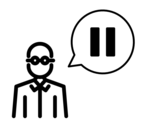
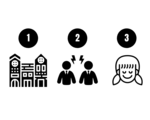
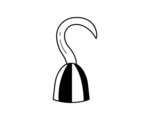
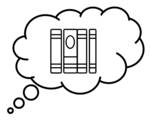
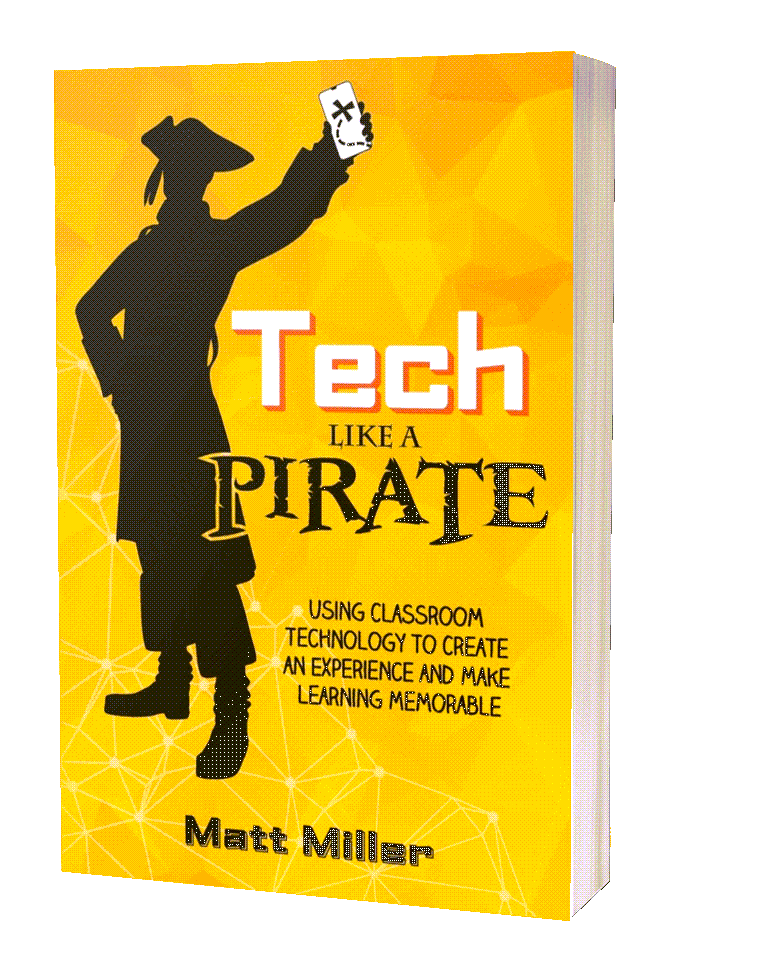

I am taking my first grad classes in education after a 30 year hiatus from college classes. It is thrilling and overwhelming at the same time. This concept of the “crummy first draft” made me smile – no, more than that – it made me resolute! I will be sharing this with my 4th graders this fall as well. We have often talked about the power of yet, but sometimes it becomes a catchy fluff phrase. It will be so powerful to be able have the “power of yet” lock arms with the “crummy first draft”.
[…] Authors love to write, right? When I submitted the original manuscript for Tech Like a PIRATE, it was too long. (Hey, can you blame me? I worked on this book for two years!) We had to cut an entire chapter to make the book the right length.Don't worry. I didn't throw away that chapter. Instead, I'm making it available exclusively on my blog! In the book, I offer seven ways to Tech Like a PIRATE: social media/apps, video, games, collaboration, images, exploration, and global communication.The eighth one is the glue that holds all of them together, the song that makes all of them sing: STORYTELLING. Click here to read that chapter right now for free! […]